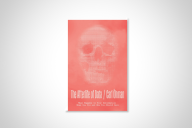You have /5 articles left.
Sign up for a free account or log in.
Among the duties of the Judicial Conference -- an august body consisting of federal judges, overseen by the Chief Justice of the Supreme Court -- is the fostering of “uniformity of management procedures and the expeditious conduct of court business.” And so it was that, four year ago this month, the Conference issued guidelines for citing Internet materials in judicial opinions. A brief statement regarding the new policy was posted to the Web, as you do.
Not long ago Raizel Liebler and June Liebert, two librarians at the John Marshall Law School in Chicago, needed to refer to the Conference’s announcement in their paper “Something Rotten in the State of Legal Citation: The Life Span of a United States Supreme Court Citation Containing an Internet Link (1996-2010),” which appeared a couple of weeks ago in the Yale Journal of Law and Technology. But the link for it they had filed away while doing their research was now dead. In the meantime, the document had migrated to another URL, so no damage done. In a footnote, the authors said, “The irony of being unable to access a website we wanted to cite in an article about the ephemeral nature of websites, including discussion of reasons to avoid citing websites, was not lost on us.”
Perhaps it counts as ironic in the colloquial American sense (i.e., “odd but not remotely ironic”) but otherwise it’s just par for the course. The earliest recorded use of the phrase “link rot” – referring to the breaking of a link either through the removal of a web page or its transfer to a new address without a redirect from the original location -- is from 1996. Like another colorful expression, "spam," it began as slang among the digital cognoscenti for a while before entering wider usage as the problem itself became a fact of life. By 1998, papers in library science and Internet research journals were taking up the instability of online information sources. A number of studies over the past 15 years have confirmed one’s gut feeling that up to a third of links, and possibly more, are broken.
What would really count as ironic would be doing research on the ephemeral nature of websites and finding that every single link you consulted was in good working order. After which lightning would probably strike you twice.
It's a nuisance, certainly, but link rot also looms as a serious problem for the disciplinary production of knowledge, which relies, in part, on the existence of stable and documentable sources of information. Citation allows others to examine those sources -- whether to verify them or assess how accurately an author has used them, or as a basis for further research.
Broken links in the bibliography are, in effect, broken links in an argument. That is particularly true given the role of law blogs, a.k.a. “blawgs,” as a source of real-time legal analysis and commentary -- something the traditional, rather slow-moving law review can’t do. Around the time the Commission put forward its suggested practices for citing online materials, John Doyle published an article with the wonderfully sonorous title “The Law Reviews: Do Their Paths of Glory Lead but to the Grave?” Doyle, an associate law librarian at the Washington & Lee University School of Law, concluded that the survival of the review format (let alone the chance of having any effect beyond building ambitious students’ résumés) depended on making articles available online with almost blawgish rapidity.
So as judicial opinions and scholarly legal debates depend more and more on documents or professional exchanges originally housed on a server somewhere, their evidence and context become vulnerable in ways Blackstone could never imagine. (The link to a history-making law review-article debated in the 2020 presidential campaign may work just fine -- but what about the material cited by the author?)
Broken links in the bibliography are, in effect, broken links in an argument.
In their recent paper from the Yale Journal of Law and Technology, Liebler and Liebert focus on link rot in a specific and definitive body of texts: the opinions handed down by the Supreme Court of the United States from the 1995-96 through the 2009-10 terms. “Our initial hypothesis,” they write, “was that the Supreme Court would use very few Internet citations due to the ephemeral and unreliable nature of those sources.”
What they actually found was that the Justices used 430 online citations over the Court’s 15 sessions -- with links appearing in 144 cases, representing about 14 percent of the total. “Of the URLs used within the U.S. Supreme Court opinions during our study period,” the authors report, “we found that 29 percent of them were invalid.”
This was almost double the rate of link rot found in a 2006 study of Supreme Court opinions, but in keeping with the level of URL breakage that investigators have noted in other legal texts. For example, the latest report from the Chesapeake Digital Preservation Group – a collaborative project of the Georgetown and Harvard law libraries and the state law libraries of Virginia and Maryland -- shows that almost 37 percent of links in a random selection of documents from the past six years had gone dead. The rate was higher for a sample from 2007-8; by now, 44 percent were broken.
In 2009, the Judicial Conference suggested that clerks download the Internet sources cited in an opinion and include them as attachments made available, along with the opinions themselves, through a legal files system such as PACER. Liebler and Liebert say that the level of compliance by courts is unknown – and the very effort raises copyright issues.
The Supreme Court prints out the Internet resources cited in its decisions, “which means,” the authors note, “that access to the archive is limited.” They suggest that the Court make its holding available by partnering with the Internet Archive – and the Chesapeake Group hopes that its own collection of documents “will lay the foundation for what could become a nationwide program to preserve materials supporting legal research, practice, and scholarship in the U.S.”
It’s a start. But what about something grander -- something audaciously bold but almost incredibly obvious? Why not draw upon the combined legal brainpower of the judiciary while also taking head-on the implications of what Edward Snowden has revealed? For it sounds like the phantom content of dead links lives on in the matrix of the National Security Administration’s record-keeping. As it is, most of that data is just going to waste -- so drill, baby, drill.








